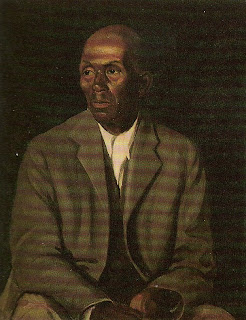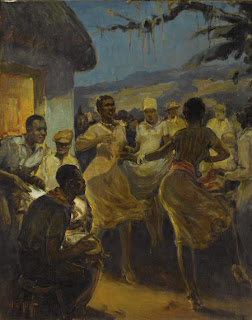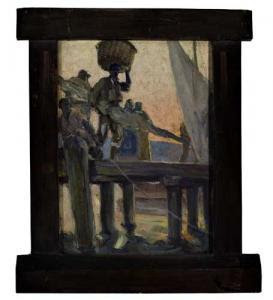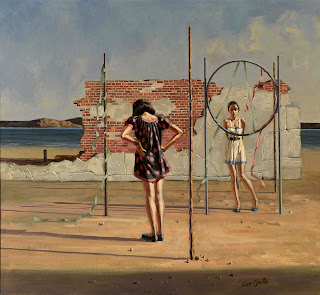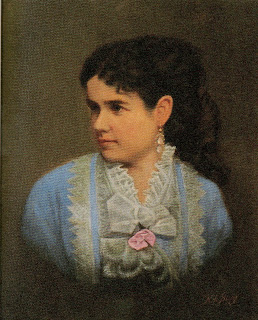 "Petunias", 18x24" oil on canvas
"Petunias", 18x24" oil on canvas
 "Peonies in a Bowl" 1885 21¼ x 29¼" oil on canvas, private collection
"Peonies in a Bowl" 1885 21¼ x 29¼" oil on canvas, private collection
Charles Ethan Porter (1847-1923) was an still life painter. He was born in 1847 in Hartford, Connecticut. In his early childhood his family move to Rockville which is now apart of Vernon, Connecticut. Here he graduated from high school in 1865, and the next 2 years he studied at the Wilbraham Wesleyan Academy in Wilbraham, Connecticut.
In 1871 Porter went on to study at the highly acclaimed New York's National Academy of Design. He supported in himself by teaching art while in school and completed his studies in 1873. That year he opened up a studio in the New York City and later continued his studies with artist Joseph Oriel Eaton the teacher of William Merit Chase.
In 1878 he moved back to Hartford where he lived worked as artist and opened up a studio. Several years later, when he traveled to Paris, he took with him a letter of recommendation from Mark Twain. In 1881 he enrolled himself in the Ecole de Arts Decoratifs. While his years in France he gathered more fundamentals to his already strong repertoire as an painter.
Upon returning to the U.S. he opened up a studio in New York City and two years later in 1887 moved back to Hartford. In 1889 Porter moved back to his childhood home of Rockville. Here he had studios in the Fitch Block and in a tower on Fox Hill. Toward the end of his life, his fortunes declined and he peddled his paintings door-to-door, trading them for food or flowers to paint. Charles Ethan Porter died in Rockville in 1923 almost forgotten, mainly because the racial climate of the time.
In recent years his paintings have been rediscovered and widely appreciated and is regarded as by many as a Master of still-life painting. Although he is mainly known his remarkable still-life's he also painted a hand full of landscapes.
 "Untitled Lanscape"
"Untitled Lanscape" " Landscape with Poplars ( Afternoon at Montigony)" 1898 oil on canvas
" Landscape with Poplars ( Afternoon at Montigony)" 1898 oil on canvas
